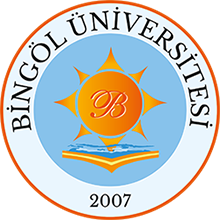In vitro effects of some metal ions on glutathione reductase in the gills and liver of Capoeta trutta
Tarih
2017Yazar
Kirici, M. and Atamanalp, M. and Kirici, M. and Beydemir, S.
Üst veri
Tüm öğe kaydını gösterÖzet
Many aquatic environmental problems have arisen in consequence of
contamination of water by toxic metals and organic pollutants in the
present age of technology. Metals play vital roles in enzyme activities
and other metabolic events due to their bioaccumulative and
nonbiodegradable properties among aquatic pollutants. The aim of this
study was to evaluate the inhibitory effects of some metal ions (Ag+,
Cu2+, Co2+, Ni2+, Pb2+ and Zn2+) on Capoeta trutta gill and liver
glutathione reductase (EC: 1.8.1.7; GR). For this purpose, initially, GR
was purified from C. trutta gill and liver. Purification procedure
consisted of three steps; preparation of hemolysate, ammonium sulphate
precipitation and 2', 5'-ADP Sepharose 4B affinity chromatography. Using
this procedure, C. turtta gill GR, having the specific activity of
19.111 EU/mg proteins, was purified with a yield of 38.8\% and
910.05-fold; C. trutta liver GR, having the specific activity of 16.167
EU/mg proteins, was purified with a yield of 21.1\% and 734.86-fold. The
purity of the enzymes was checked on sodium dodecyl
sulphate-polyacrylamide gel electrophoresis (SDS-PAGE) and each purified
enzyme showed a single band on the gel. In addition, inhibitory effects
of some metal ions (Ag+, Cu2+, Co2+, Ni2+, Pb2+ and Zn2+) on GR from
gill and liver were investigated in vitro. Ki constants and IC50 values
for metal ions which showed inhibition effects were determined by
Lineweaver-Burk graps and plotting activity \% vs. {[}I]. In conclusion,
IC50 values for fish gill GR were 0.000625, 0.153, 0.220, 0.247 and
0.216 mM and Ki constants for fish gill GR were 0.00045 +/- 0.00008,
0.128 +/- 0.036, 0.182 +/- 0.138, 0.482 +/- 0.219 and 0.112 +/- 0.047 mM
for Ag+, Cu2+, Co2+, Ni2+, Pb2+ and Zn2+, respectively. IC50 values for
fish liver GR were 0.000437, 0.217, 0.185, 0.355 and 0.349 mM and Ki
constants for fish liver GR were 0.00025 +/- 0.00013, 0.532 +/- 0.146,
0.123 +/- 0.066, 0.093 +/- 0.020 and 0.151 +/- 0.084 mM for Ag+, Cu2+,
Co2+, Ni2+, Pb2+ and Zn2+, respectively. In vitro inhibition rank order
was determined as Ag+ > Co2+ > Zn2+ > Ni2+ > Pb2+ for fish gill GR; Ag+
> Cu2+ > Co2+ > Pb2+ > Ni2+ for fish liver GR. From these results, we
showed that Ag+ metal ion is the most potent inhibitor of GR enzyme on
gill and liver tissues.
Koleksiyonlar

DSpace@BİNGÖL by Bingöl University Institutional Repository is licensed under a Creative Commons Attribution-NonCommercial-NoDerivs 4.0 Unported License..













